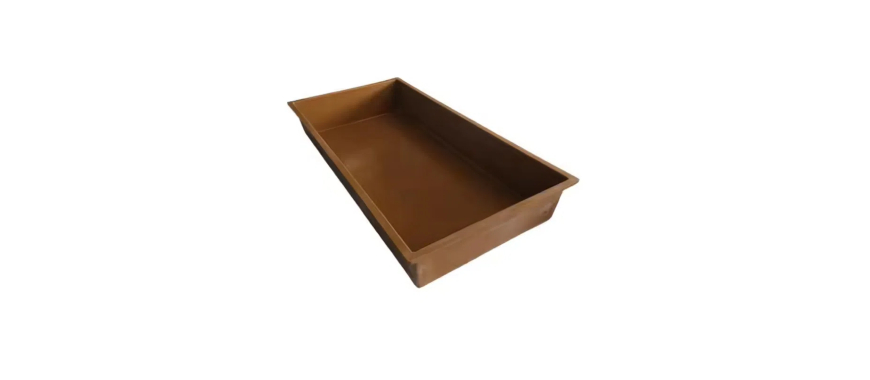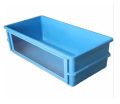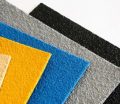
Aluminum stringers in a fiberglass boat are structural components that provide critical support to the boat’s hull and deck. They act as a backbone, ensuring the boat maintains its shape and strength under stress from waves and weight. Over time, traditional wood or fiberglass stringers may deteriorate, especially in harsh marine environments. This is why aluminum stringers in a fiberglass boat are becoming a popular alternative. Aluminum is highly durable, resistant to corrosion, and offers a superior strength-to-weight ratio, making it ideal for boat construction and repair. As fiberglass boat owners seek long-lasting solutions, the growing trend of using aluminum stringers in a fiberglass boat is seen as a cost-effective way to enhance performance and extend the lifespan of the vessel.
What Are Aluminum Stringers in a Fiberglass Boat
Using aluminum stringers in a fiberglass boat is an innovative approach to enhancing structural integrity, durability, and performance. Stringers are a fundamental component of boat construction, providing the framework that supports the hull and distributes stresses evenly across the structure. By replacing traditional materials like wood or fiberglass with aluminum, boat owners can achieve a lighter, stronger, and more corrosion-resistant framework. However, there are key factors to consider when opting for aluminum stringers in a fiberglass boat, including cost, installation complexity, and long-term performance.
Challenges with Aluminum Stringers in Fiberglass Boats
Bonding Issues
One of the primary challenges of using aluminum stringers in a fiberglass boat is ensuring proper bonding between the two materials. Aluminum expands and contracts differently than fiberglass, which can lead to stresses at the bonding interface. Over time, these stresses may cause disbonding, reducing the structural integrity of the boat.
Flexing Over Time
Aluminum’s rigidity can be a double-edged sword. While it adds strength, its lack of flexibility compared to fiberglass can lead to localized stress points, especially in areas with heavy loads or constant movement. This could result in cracking or fatigue of the surrounding fiberglass.
Cost Considerations
Aluminum stringers are typically more expensive than traditional wood or fiberglass options. The higher cost stems from the price of the material itself, specialized fabrication requirements, and the need for high-quality adhesives or fasteners to ensure secure bonding.
Specialized Fabrication
Aluminum stringers require precise fabrication, often involving welding or machining. This adds to the complexity and cost of installation, making professional assistance almost essential. Boat owners should factor in these additional requirements when considering aluminum stringers in a fiberglass boat.
Potential for Corrosion
Although aluminum is resistant to rust, it is not completely immune to corrosion, especially in saltwater environments. Proper coatings and regular maintenance are necessary to prevent corrosion and ensure the longevity of aluminum stringers in a fiberglass boat.
Cost of Installing Aluminum Stringers in a Fiberglass Boat
Breakdown of Costs
The cost of installing aluminum stringers in a fiberglass boat varies depending on several factors, including the size of the boat, the type and grade of aluminum used, and whether the installation is handled professionally or as a DIY project. The material cost for aluminum stringers typically ranges from $300 to $1,000, while labor costs for professional installation can add another $500 to $2,000.
Additional Tools and Materials
Installing aluminum stringers requires specialized tools such as welding equipment, rivet guns, and marine-grade adhesives. These tools can cost $100 to $500, depending on the quality and type of equipment needed. Coatings or treatments to protect the aluminum from corrosion may also add to the overall expense.
Factors Influencing Costs
The complexity of the boat’s design and the condition of the existing structure can significantly impact the cost of installation. Boats with curved or intricate designs may require custom-fabricated stringers, increasing both material and labor costs. Conversely, straightforward installations on flat or simple designs are generally less expensive.
Long-Term Savings
Despite the higher upfront cost, aluminum stringers in a fiberglass boat offer long-term savings due to their durability and low maintenance requirements. Unlike wood stringers, which are prone to rot, or fiberglass stringers, which can degrade over time, aluminum stringers require minimal upkeep and can last for decades.
Is It Worth Replacing Wood or Fiberglass Stringers with Aluminum?
Advantages of Aluminum Stringers
Aluminum stringers are lightweight, strong, and resistant to rot and corrosion, making them an excellent choice for long-term durability. They also improve the boat’s overall performance by reducing weight, which enhances fuel efficiency and speed.
Disadvantages of Aluminum Stringers
The main drawback of aluminum stringers is their cost. Both the material and installation are more expensive than traditional options. Additionally, the bonding challenges between aluminum and fiberglass may require extra attention during installation, further increasing complexity.
When Aluminum Makes Sense
Aluminum stringers are an excellent choice for high-performance boats or vessels operating in harsh marine environments. They are ideal for owners who prioritize durability and low maintenance over initial cost.
When Traditional Materials Might Be Preferred
In some cases, wood or fiberglass stringers may still be the better choice. For example, wood stringers are easier and cheaper to repair or replace, making them suitable for older boats or those on a tight budget. Fiberglass stringers are more flexible and can integrate seamlessly with the existing fiberglass structure, reducing the risk of disbonding.
Environmental Impact of Aluminum Stringers
Sustainability of Aluminum
Aluminum is a highly sustainable material, as it can be recycled indefinitely without losing its properties. This makes it an environmentally friendly option for boat construction and repairs.
Recycling Potential
Using aluminum stringers in a fiberglass boat contributes to sustainability by reducing waste. Aluminum is one of the most widely recycled materials globally, and its recycling process consumes significantly less energy than producing new aluminum.
Environmental Benefits
The durability and long lifespan of aluminum stringers reduce the need for frequent replacements, minimizing the environmental impact of manufacturing and disposal. Additionally, aluminum’s lightweight properties improve fuel efficiency, reducing the boat’s carbon footprint.
Considerations for Eco-Friendly Repairs
Boat owners seeking environmentally friendly solutions should ensure that the aluminum used is sourced from recycled materials and that any coatings or adhesives applied are non-toxic and safe for marine ecosystems.
Should You Use Aluminum Stringers in Your Fiberglass Boat?
Using aluminum stringers in a fiberglass boat is a smart investment for those looking to enhance durability, performance, and sustainability. While the upfront cost and installation complexity are higher compared to traditional materials, the long-term benefits make aluminum stringers a worthwhile choice for many boat owners. Before deciding, it is essential to assess the specific needs of your boat, consider the operating environment, and weigh the advantages against the potential challenges. Consulting with professionals can provide valuable insights and ensure a successful installation that meets your expectations.
Finding the Perfect Fiberglass 2 Seater Bass Boat for Sale
What Are Aluminum Stringers in a Fiberglass Boat
Aluminum stringers in a fiberglass boat are a modern alternative to traditional materials like wood or composite fiberglass. Stringers are the backbone of a boat’s structural framework, supporting the hull and distributing stresses evenly. By replacing older materials with aluminum, boat owners can achieve improved durability, reduced maintenance, and enhanced performance. Aluminum is lightweight, strong, and corrosion-resistant, making it an ideal choice for upgrading or repairing the structural components of fiberglass boats.
Benefits of Using Aluminum Stringers in a Fiberglass Boat
Durability in Marine Environments
Aluminum stringers in a fiberglass boat offer exceptional resistance to corrosion, particularly in saltwater conditions. Unlike wood, which can rot, or fiberglass, which can degrade over time, aluminum maintains its structural integrity with minimal deterioration.
Superior Strength-to-Weight Ratio
One of the most notable advantages of aluminum is its excellent strength-to-weight ratio. Aluminum stringers enhance the boat’s structural integrity without adding unnecessary weight, allowing for better handling and increased fuel efficiency.
Reduced Maintenance
Aluminum stringers require significantly less maintenance than their wood or fiberglass counterparts. They do not absorb water, warp, or crack, making them a hassle-free option for long-term use. Routine cleaning and occasional inspections are usually sufficient to keep aluminum stringers in top condition.
Longevity and Lifespan
Installing aluminum stringers in a fiberglass boat extends the vessel’s lifespan. The material’s resilience against environmental factors ensures that the stringers remain reliable for decades, reducing the need for frequent repairs or replacements.
Versatility in Design and Application
Aluminum can be custom-fabricated to fit various boat designs and applications. Whether reinforcing a speedboat, fishing vessel, or recreational craft, aluminum stringers can be tailored to meet specific requirements, enhancing the overall functionality of the boat.
How Aluminum Stringers Improve Boat Performance
Enhanced Stability and Handling
Aluminum stringers contribute to better weight distribution within the boat, improving stability and handling. This is especially important for high-performance boats, where precise weight balance directly impacts speed and maneuverability.
Improved Load Capacity
The strength of aluminum allows the boat to carry heavier loads without compromising its structural integrity. This is particularly beneficial for fishing boats or vessels designed to transport equipment and supplies.
Reduced Hull Stress
Aluminum stringers in a fiberglass boat reduce stress on the hull by evenly distributing forces across the structure. This minimizes the risk of cracks or deformities in the fiberglass, maintaining the boat’s performance and appearance.
Performance for Speed and Agility
For performance-driven boats like speedboats, aluminum stringers enhance agility and acceleration. The reduced weight combined with increased strength allows for better responsiveness on the water.
Real-Life Examples
Many modern boat designs incorporate aluminum stringers to improve performance and durability. Owners of speedboats and fishing vessels report noticeable improvements in handling and reduced maintenance after upgrading to aluminum stringers.
Key Features Of Fiberglass Bass Boat Molds Kits You Should Know
Installation of Aluminum Stringers in Fiberglass Boats
Step-by-Step Installation Guide
Installing aluminum stringers in a fiberglass boat requires precision and the right tools.
- Assessment and Preparation
Begin by assessing the condition of the boat’s existing stringers. Remove any damaged materials and clean the hull thoroughly to create a smooth surface for installation. - Measuring and Cutting Aluminum
Measure the dimensions of the stringer compartments and cut the aluminum stringers to fit precisely. Use marine-grade aluminum to ensure durability and resistance to corrosion. - Securing the Stringers
Place the aluminum stringers into the designated compartments and secure them using marine-grade adhesives, rivets, or bolts. Ensure that the stringers are aligned correctly to maintain the boat’s structural balance. - Reinforcing and Sealing
Apply a waterproof sealant to the edges of the stringers to prevent moisture intrusion. Reinforce the attachment points to ensure long-term stability. - Testing and Finishing
Inspect the installation for any gaps or misalignments. Test the boat’s performance on the water to confirm that the aluminum stringers are securely in place and functioning as intended.
Tools and Materials Required
- Marine-grade aluminum stringers
- Measuring tools (tape measure, calipers)
- Cutting tools (saws, grinders)
- Fasteners (rivets, bolts)
- Marine adhesives and sealants
- Protective coatings for added corrosion resistance
Professional Installation vs. DIY
While some boat owners may choose to install aluminum stringers themselves, professional installation ensures precision and reliability. Experts have the tools and experience to handle complex installations, minimizing the risk of errors or future issues. DIY installation is more cost-effective but requires careful planning and execution to achieve the same level of quality.
Challenges with Aluminum Stringers in Fiberglass Boats
Bonding Between Materials
One of the primary challenges of using aluminum stringers in a fiberglass boat is achieving a strong bond between the two materials. The different expansion and contraction rates of aluminum and fiberglass can create stress points, leading to disbonding over time.
Corrosion Concerns
Although aluminum is resistant to rust, it can still corrode in saltwater environments if not properly treated. Applying protective coatings and ensuring regular maintenance are essential to prevent corrosion.
Higher Costs
Aluminum stringers are more expensive than wood or fiberglass alternatives, both in terms of material and installation costs. However, their long-term durability often offsets the higher initial investment.
Fabrication Complexity
Customizing aluminum stringers to fit a specific boat design requires specialized fabrication techniques. This adds to the complexity and cost of the installation process.
Limited Flexibility
Unlike wood or fiberglass, aluminum is less flexible. This can create challenges in boats with curved designs or areas that require precise adjustments.
Why Choose Aluminum Stringers in a Fiberglass Boat?
Despite the challenges, aluminum stringers in a fiberglass boat are an excellent choice for those seeking durability, performance, and low maintenance. Their long lifespan and resistance to environmental damage make them a smart investment for boat owners who prioritize quality and reliability. By understanding the benefits and addressing potential challenges, boat owners can make informed decisions when upgrading to aluminum stringers, ensuring their vessel remains strong and functional for years to come.
How to Access Fiberglass Bass Boat Plans PDF for Building
FAQs about Aluminum Stringers in A Fiberglass Boat
The best material for boat stringers depends on the type of boat and its intended use. Traditionally, stringers are made from wood, fiberglass, or composite materials. For most fiberglass boats, fiberglass stringers are often considered the best option due to their durability, strength, and resistance to moisture. Unlike wood, fiberglass stringers are not prone to rot, which is crucial in maintaining the integrity of the boat over time. Composite stringers, made from a mix of materials like fiberglass and resin, also provide excellent strength and resistance to water damage. Aluminum and steel are occasionally used for stringers in aluminum boats, as they offer additional strength and resistance to corrosion. The best material for boat stringers largely depends on the specific needs of the boat, including its size, usage conditions, and maintenance requirements.
Yes, fiberglass boats typically have stringers. Stringers are an essential part of the boat’s internal structure, helping to distribute the load and support the hull. They are located along the length of the boat, running from the bow to the stern. In fiberglass boats, stringers are usually made of fiberglass or composite materials, as these materials provide the necessary strength and resistance to water-related damage. Stringers are essential for the overall structural integrity of the boat. They also prevent the boat from warping or flexing under pressure, especially when the boat is moving at speed or when it is exposed to heavy loads. Stringers are critical in reinforcing the hull and ensuring the boat maintains its shape and stability throughout its lifespan.
Using a boat with bad stringers is not recommended. Stringers are critical to the structural integrity of the boat, and if they are damaged, weakened, or compromised, it can affect the overall safety and performance of the boat. When stringers fail, it can cause the hull to flex, warp, or even crack, which can lead to further damage and the potential for catastrophic failure. If you suspect that your boat has bad stringers, it’s crucial to inspect them thoroughly and replace or repair them as needed. If the damage is severe, it may be necessary to consult with a professional boat repair specialist. Ignoring bad stringers can lead to costly repairs in the future and potentially dangerous situations when using the boat. Always prioritize boat safety and maintenance to ensure optimal performance.

As the editor of GangLong Fiberglass, I have years of experience and in-depth research, focusing on cable tray products, fiberglass solutions, and grille systems. I incorporate years of industry insights and practical experience into every content, committed to promoting the progress of the industry. At GangLong Fiberglass, my commitment is reflected in every product, from innovative cable trays to durable fiberglass solutions and sturdy grille systems. As an authoritative voice in the industry, my goal is to provide valuable information to professionals and businesses and promote forward-looking solutions.


